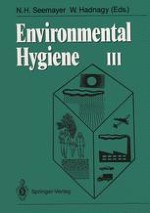1992 | OriginalPaper | Buchkapitel
Urinary Alkylpurines as Markers of Alkylating Agent Exposure in Humans
verfasst von : V. Prevost, D. E. G. Shuker, H. Bartsch
Erschienen in: Environmental Hygiene III
Verlag: Springer Berlin Heidelberg
Enthalten in: Professional Book Archive
Aktivieren Sie unsere intelligente Suche, um passende Fachinhalte oder Patente zu finden.
Wählen Sie Textabschnitte aus um mit Künstlicher Intelligenz passenden Patente zu finden. powered by
Markieren Sie Textabschnitte, um KI-gestützt weitere passende Inhalte zu finden. powered by
The mechanism of action of many carcinogens is considered to involve the formation of electrophilic alkylating agents which react with nucleophilic sites in DNA giving rise to a range of adducts (Miller, 1978). All of the nitrogen and oxygen atoms in purines and pyrimidines are known to form adducts with various carcinogens, although the relative amounts of each adduct vary greatly depending on the reactivity of the alkylating species (Singer and Kusmierek, 1982). O6-alkylguanine adducts are promutagenic lesions which can be repaired by alkyltransferases which remove the alkyl group. In contrast, N7- and N3-purine adducts are repaired by glycosylases which excise the alkylated base (Karran and Lindahl, 1985). Excised alkylpurines are known to be resistant to catabolism and are excreted in urine. These observations are the basis of methods for the non-invasive measurement of human exposure to alkylating carcinogens using excreted DNA adducts (Shuker, 1989). This approach has been particularly successful in studies on human exposure to aflatoxin B1 (Groopman et al., 1991).
